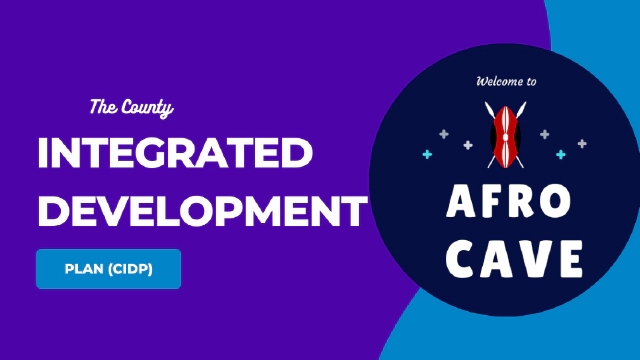The County Integrated Development Plan (CIDP) in Kenya is one of the major types of county plans in Kenya. It is a five-year plan that counties prepare to guide their development activities. Therefore, it is important to understand how to analyse a County Integrated Development Plan (CIDP).
The other types of county plans in Kenya are Sectoral Plans, Spatial Plans and City or Municipal Plans.
The Public Finance Management Act states that no county shall allocate or spend its funds without a planning framework. The County Executive shall develop the county plans. Thereafter, the County Assemblies shall approve these county plans according to the law.
The County Integrated Development Plan (CIDP) shall contain the strategic midterm priorities of the county governments. These are usually the priorities for the county during the tenure of a county government (5 years).
The County Integrated Development Plan (CIDP) shall contain information on development priorities that inform the annual budget process, particularly the preparation of annual development plans, the annual county fiscal strategy papers, and the annual budget estimates.
Table of Contents Show/Hide
Key Questions about the County Integrated Development Plan (CIDP)
The International Budget Partnership (IBP) Kenya has a guide on how to analyse a County Integrated Development Plan (CIDP). The guide uses a set of nine key questions and the guide is useful during preparation, validation, and approval stages of the CIDP process.
The guide is also useful whether the CIDP is available or not because it provides guidelines on what a CIDP shall have. This article presents a summary of the key questions highlighted in the guide.
- Does the current CIDP provide a review of the previous CIDP and its implications for the current CIDP? – historical performance trends in the county shall inform the preparation of a County Integrated Development Plan (CIDP). Counties shall prepare CIDPs in such a way that they consider successes and challenges from previous years.
- Does the CIDP provide a clear and realistic development strategy for the county over the next five- year period? (setting the priorities) – CIDPs shall provide a clear development strategy for the county for the next five years, including a clear theory of change. Moreover, how selected priorities will be applied and how priority sectors will spur development.
- Does the CIDP provide for programmes and transformative projects to be implemented to achieve the desired developmental change? – The CIDP will be a key reference document in subsequent budget preparation processes. Two key components that shall be provided in the CIDP are programmes and projects. Programmes define the objectives to be met by counties’ spending and projects shall be the flagship and transformative projects that are proposed to support the development agenda the county is advancing in the next five years.
- Does the CIDP provide a clear and realistic revenue mobilisation strategy for the county over the five year period? – It shall be clear how priorities in the CIDP will be funded including the different sources of revenue for the county government. There shall be a clear revenue mobilization strategy that includes existing revenue sources and new revenue sources.
- Does the CIDP indicate areas of coordination between the national government, other county governments, development partners and other stakeholders in county development? – The CIDP provides the overall development agenda for the county, which requires coordination among various stakeholders to avoid duplication of effort and to build synergies.
- Does the CIDP propose deliberate steps to promote equitable distribution of resources? – The CIDP shall provide information that shows the least developed areas (using various parameters such as access to improved water, health care, etc.) and the intended steps to reduce inequalities.
- Does the CIDP provide an implementation, monitoring and evaluation framework? – The CIDP is a five-year plan and it shall have an implementation, monitoring, and evaluation framework in place. Clear timeframes, baselines, targets, as well as indicators for programmes and major projects shall be provided in the CIDP, among other requirements.
- Are there adequate justifications for the proposals being advanced by the CIDP and what data or evidence is cited in the proposals in your CIDP? – The CIDP shall provide relevant information to support all proposals therein, and to aid in budgetary decision making for the next five years. Explanations of proposals and decisions made during the CIDP process shall be adequate based on accessible, accurate, and verifiable data.
- Is there evidence of meaningful public participation in the CIDP preparation process? – The CIDP shall provide a report on the public inputs included in the CIDP preparation process, and how it influenced the final document. If these inputs were rejected, adequate reasons why shall be provided.
Those are the nine key questions that you shall understand to analyse a County Integrated Development Plan (CIDP). For more detailed information, see the IBP Guide on the CIDP(External Link).

